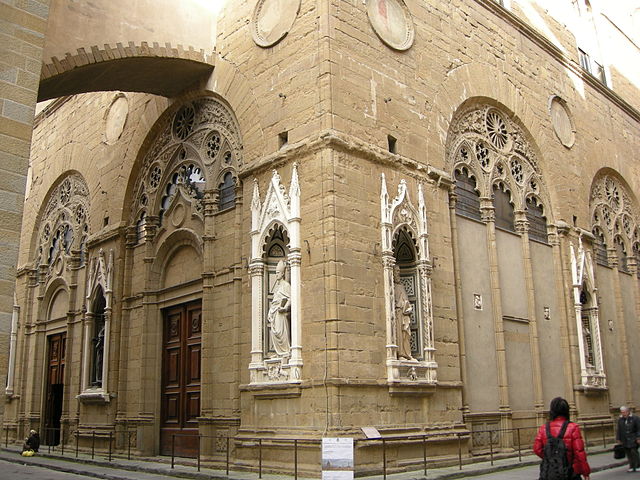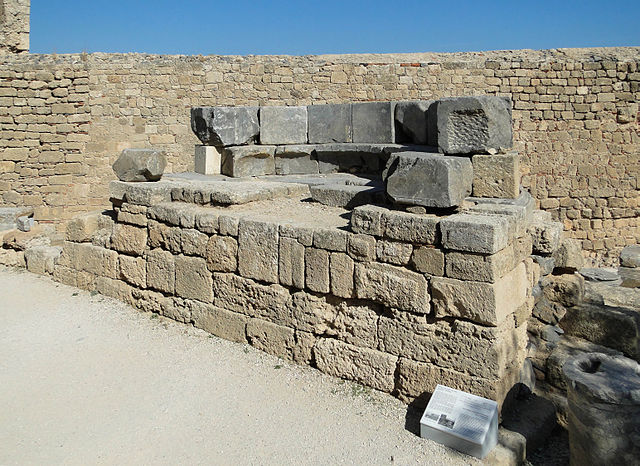In architecture, a niche is a recess or cavity constructed in the thickness of a wall for the reception of decorative objects such as statues, busts, urns, and vases. In Classical architecture examples are an exedra or an apse that has been reduced in size, retaining the half-dome heading usual for an apse. In the first century B.C, there was no exact mention of niches, but rather a zotheca or small room. These rooms closely resemble alcoves similar to a niche but slightly larger. Different sizes and sculpture methods suggest the term niche was understood. Greeks and Romans especially, used niches for important family tombs.
Niche with a sculpture by Antoine Coysevox, in the Les Invalides, Paris
Mihrab from the Mosque of Cordoba (niche shows the direction of prayer)
Porta Maggiore niches appear between arches.
Niches containing statues on exterior of Church of Orsanmichele, Florence, c. 1380–1404
An exedra is a semicircular architectural recess or platform, sometimes crowned by a semi-dome, and either set into a building's façade or free-standing. The original Greek sense was applied to a room that opened onto a stoa, ringed with curved high-backed stone benches, a suitable place for conversation. An exedra may also be expressed by a curved break in a colonnade, perhaps with a semicircular seat.
Exedra of Pamphilidas, Acropolis of Lindos, Rhodes, Greece
The foundations and partial floor of a late Roman villa. The floored part is the exedra. The rest of the floor has deteriorated and is missing, with only parts of the hypocaust columns remaining. Hot air circulated through the hypocaust to heat the house.
Exedra of the Belvedere Court, at the Vatican Palace in Rome
Open-air exedra with bench – the Abraham Lincoln: The Head of State monument in Grant Park, Chicago








